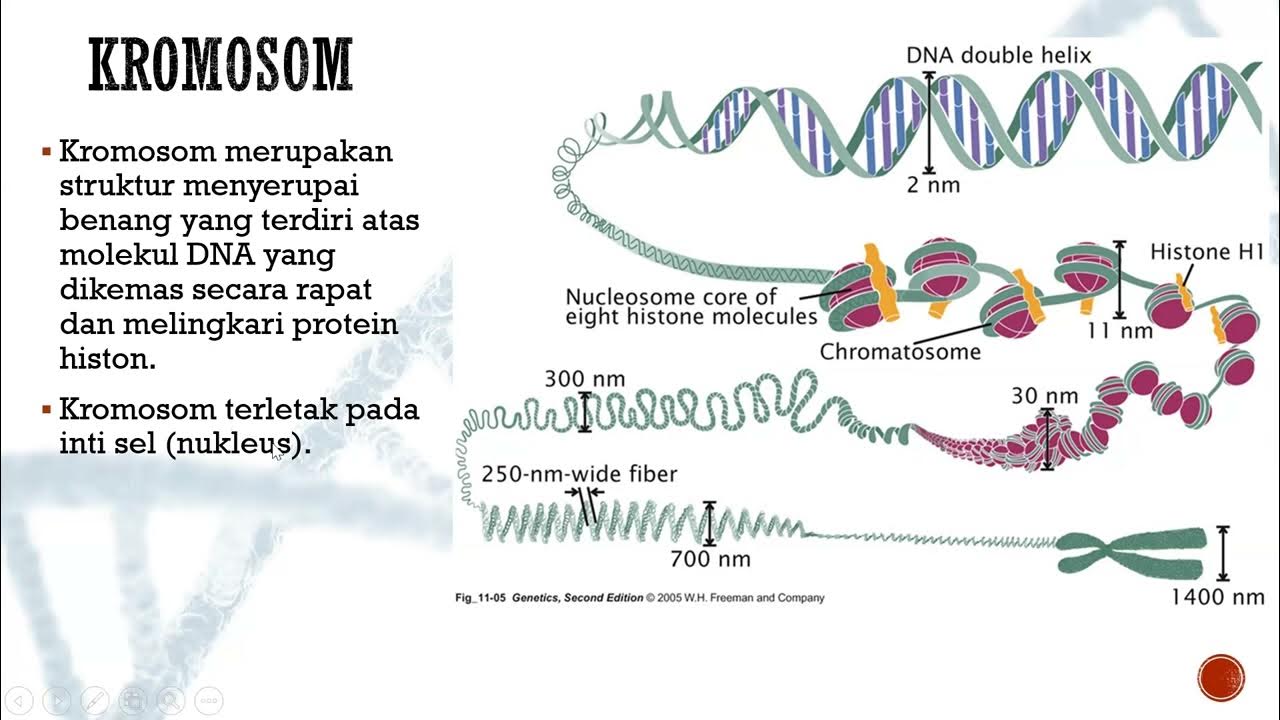Basic Genetics Part 2
Summary
TLDRThis transcript delves into the basics of genetics, explaining how genes serve as blueprints for proteins, with proteins playing a key role in determining traits. It covers dominant, recessive, and X-linked genes, providing examples like Huntington’s disease and cystic fibrosis. The discussion includes homozygous and heterozygous genetic combinations, along with the process of Punnett squares to predict offspring traits. The importance of gene inheritance, carrier status, and how different genetic combinations affect outcomes is clearly outlined. This educational content simplifies complex genetic concepts for easy understanding.
Takeaways
- 😀 Genes are blueprints for making proteins, which affect various traits and behaviors.
- 😀 A person has two copies of each gene, inherited from each parent, which can be either dominant, recessive, or X-linked.
- 😀 A dominant gene only requires one allele to show its associated trait. Examples include eye color and Huntington's disease.
- 😀 Huntington's disease is caused by a dominant gene, where a mutated protein accumulates in neurons, leading to dysfunction.
- 😀 Recessive genes require both alleles to be mutated for the trait to manifest, as in the case of cystic fibrosis.
- 😀 A carrier of a recessive gene has only one mutated allele but can pass it to offspring, though they do not show the recessive trait.
- 😀 X-linked traits are different for males and females because males have only one X chromosome, while females have two.
- 😀 For females, if one X chromosome carries a mutation, the other X chromosome might compensate, but in males, a mutation on the single X chromosome will show the trait.
- 😀 The genetic combinations of alleles can be homozygous dominant, homozygous recessive, or heterozygous, where the alleles are different.
- 😀 Punnett squares are used to visualize the possible genetic outcomes of crosses between individuals, and there are six primary combinations to consider.
- 😀 In some cases, such as with X-linked inheritance, the parent’s sex (mom vs. dad) can affect the genetic outcomes, but for most traits, the gene’s origin doesn't matter.
Q & A
What role do genes play in the body?
-Genes act as blueprints or codes for making proteins, which are responsible for the structure, function, and behavior of an organism. Most traits are the result of multiple proteins, but some can be determined by a single gene.
What are the three types of alleles discussed in the transcript?
-The three types of alleles are dominant, recessive, and X-linked alleles. Dominant alleles require just one copy to show a trait, recessive alleles require two copies, and X-linked alleles are found on the X chromosome and exhibit different inheritance patterns in males and females.
What is a dominant gene and how does it work?
-A dominant gene only requires one allele to express a trait. For example, in Huntington's disease, only one copy of the mutated gene is enough to cause the disease. Dominant genes are usually represented by capital letters.
How does a recessive gene differ from a dominant gene?
-A recessive gene requires two copies of the mutated allele for the trait to appear. If only one copy is mutated, the trait will not be expressed. An example is cystic fibrosis, where both alleles must be mutated for the condition to manifest.
What is a carrier in genetic terms?
-A carrier is someone who has one copy of a recessive allele and one normal allele. Carriers do not express the recessive trait but can pass the mutated gene to their offspring.
What makes X-linked inheritance unique for males and females?
-X-linked inheritance is unique because females have two X chromosomes, which can compensate for a mutated gene, while males only have one X chromosome. If a male inherits a mutated X-linked gene, it will be expressed because there is no second X chromosome to provide a normal allele.
What is the difference between homozygous and heterozygous?
-Homozygous refers to having two identical alleles for a gene, either both dominant (homozygous dominant) or both recessive (homozygous recessive). Heterozygous means having one dominant allele and one recessive allele.
How do Punnett squares help in understanding genetic inheritance?
-Punnett squares are tools that predict the genetic outcomes of a cross between two individuals. By mapping the possible alleles from each parent, Punnett squares show the likelihood of different genetic combinations in the offspring.
What is the genotypic and phenotypic ratio in a Punnett square?
-The genotypic ratio refers to the proportion of different genetic combinations (e.g., homozygous dominant, heterozygous, or homozygous recessive), while the phenotypic ratio refers to the proportion of traits expressed in the offspring based on the gene combinations.
Why does the inheritance pattern of X-linked traits matter for males more than females?
-Since males have only one X chromosome, a mutated X-linked gene will always express the trait. Females, with two X chromosomes, can carry a mutated gene without expressing the trait if the other X chromosome carries a normal allele. This makes X-linked traits more common in males.
Outlines

This section is available to paid users only. Please upgrade to access this part.
Upgrade NowMindmap

This section is available to paid users only. Please upgrade to access this part.
Upgrade NowKeywords

This section is available to paid users only. Please upgrade to access this part.
Upgrade NowHighlights

This section is available to paid users only. Please upgrade to access this part.
Upgrade NowTranscripts

This section is available to paid users only. Please upgrade to access this part.
Upgrade Now5.0 / 5 (0 votes)





